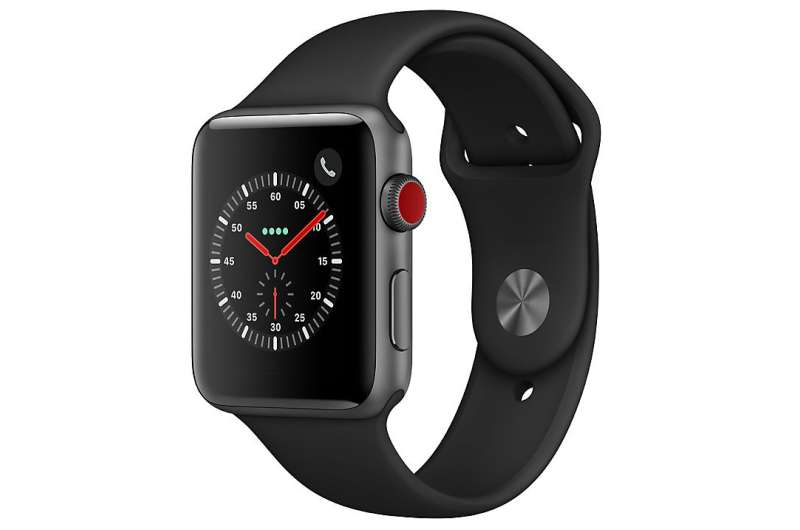Consumers thinking about buying a new Apple Watch might be wondering what's the difference between the older (but still on sale) $199 model and the new $399 Series 6?
A lot.
The 6 has a more powerful processor and all of those health features Apple likes to tout for the Watch, like the ability to check your blood oxygen level and ECG. The Series 3 has none of those tools, and it doesn't connect to cellular networks either, which means that you can't use the 3 in the new Family Setup plan. That allows multiple watches to be linked to one iPhone and is being sold as a way to get the kids a watch without having to buy them expensive smartphones.
So what do you do if you want all those features but don't feel like spending $399? Then Apple has an in-between model, the $269 SE, and while it works with Family Setup, you'll be missing some key health features here, too, namely blood oxygen and ECG, and you can check your heart rate too.
The SE can connect to cellular networks and will work with the Family Setup.
The new watches, the Series 6 and SE, will be released Friday.
A closer look:
Series 6
The big differences in this year's model (vs. the Series 5) is the blood oxygen reading, a faster processor and a brighter screen. The "Always on" Display is "30%" larger than Series 3, and is different from the other models in that the screen doesn't go dark when you're not using it, which is what happens on the SE and Series 3. It has a Dual-core SiP 6 processing chip, which Apple says is "up to" 20 percent faster than last year's Series 5 model. Beyond blood oxygen reading and ECG, this model can also can also detect if you've taken a fall and call 911 on your behalf, as can the SE. Apple claims consumers will get 18 hours of battery life from the Series 6 and the other two watches, although Laguna Beach, California, web designer Jan Schrieber notes that her Watch was at 25% by 10 a.m. Wednesday morning, after just 5 hours of use. Cost: $399, or $499 with cellular connectivity.
SE
Available with the same size watch face, 40mm or 44mm, but with a Retina Display that turns itself off when not in use, so you'll need to flick your wrist to kick it in. Health features: heart notifications and irregular heart rhythm to "alert you if it detects unusually high or low heart rates or an irregular rhythm as well as measure your current heart rate." (The same two features available on the Series 3.) Has a dual-core SiP 5 processing chip, which Apple says is 2x faster than the Series 3. Cost: $279 or $309, depending upon the size, and $329 or $359 with cellular connectivity.
Series 3
First introduced in 2017, this watch is smaller in size (just barely, with 38mm or 42mm watch faces available, compared to the 40mm and 44mm of the other two) and has a dual-core S3 SiP processing chip. Missing the compass of the other two models and has a speaker that is "50%" less loud as that of the SE or Series 6, per Apple. Again, missing the heavily advertised health features of the Series 6 and will not work with Family Setup because the Series 3 doesn't come with cellular connectivity. Cost: $199.
Fitness+
The new training subscription service from Apple will debut in "late 2020" and was touted heavily at this week's "Time Flies," event. You can watch the sessions on your iPhone or iPad, but Apple says you must have an Apple Watch to participate because it "personalizes your Apple Fitness+ experience by integrating your personal metrics, like your heart rate and the calories you burn, into every workout. It brings them to life on the screen to keep you informed and motivated." Which Watch does it work with? Series 3, SE and Series 6. The cost is $9.99 monthly, but Apple says it will give you three months free if you buy any new Apple Watch.
©2020 USA Today
Distributed by Tribune Content Agency, LLC.
























